
The Beloselsky-Belozersky Palace is a former mansion and a monument of architecture in the new Baroque style, which is a significant landmark of St. Petersburg.
The palace is also known as the Sergius Palace-after one of the owners.
Today, the palace is a place of culture - within its walls there is a museum, guided tours of the preserved interiors, as well as concerts, conferences, presentations and photo shoots.
The Beloselsky-Belozersky Palace is located in the center of Saint Petersburg, near Anichkov Bridge, opposite Anichkov Palace, at the intersection of the Fontanka River embankment and Nevsky Prospekt-one of the most visited and beautiful streets of the city.
In addition, the Beloselsky-Belozersky Palace is one of the most striking buildings on Nevsky Prospekt.
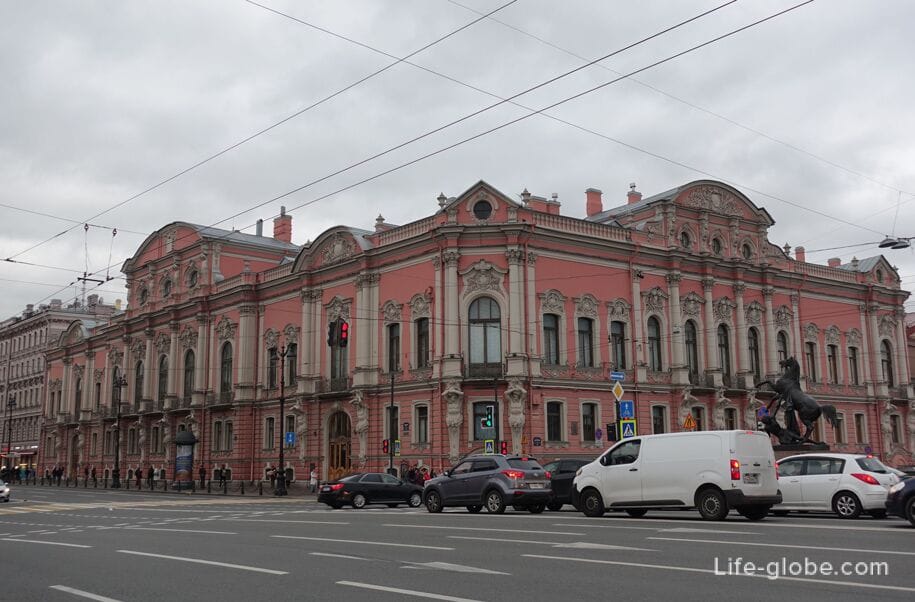
The palace was built in 1847-1848 on the site of a former mansion in the classical style, commissioned by Prince Esper Alexandrovich Beloselsky-Belozersky. The project of the palace in the style of the so - called "Russian neo-baroque" belongs to the architect of the era of Nicholas I-Andrey Ivanovich Stackenschneider.
The Russian Baroque art techniques of the 18th century were widely used in the decoration of the palace facades. The sculptor David Ivanovich Jensen participated in the decoration of the palace, according to whose models the figures of Atlanteans and caryatids were created.
After the construction and death of Esper, his wife - Elena Pavlovna (nee Bibikova) used the palace for balls and social events, but she did not live in it. At that time, the palace was considered one of the most secular places in the capital; the owners spoke Russian with a slight English accent - in the latest fashion of those years, and the events in the palace were attended by the royal personages themselves.
Since 1884, the palace was owned by Grand Duke Sergei Alexandrovich-the younger brother of Alexander III-the palace became a wedding gift for his marriage to Elizabeth of Hesse-Darmstadt (Elizabeth Feodorovna). Hence the second name of the palace - "Sergievsky".
Subsequently, the palace changed owners and its interiors changed.
During the First World War, the palace housed an Anglo-Russian military hospital.
After the October Revolution of 1917, the Beloselsky-Belozersky Palace was nationalized, and various public organizations were located within its walls. After 1992, the palace was transferred to the Committee for Culture of the City Hall of St. Petersburg and the state cultural institution "St. Petersburg Cultural Center"was located in it.
Since January 2003, the building of the former palace was transferred to the Office of the President of the Russian Federation. Large - scale restoration works were carried out in the palace, during which the original color solutions in the design, conceived by its first architect-A. I. Stackenschneider, were returned to the halls.
Today, the Beloselsky-Belozersky Palace still adorns Nevsky Prospekt and the Fontanka River embankment. It attracts attention with its bright color, columns with capitals, architectural decorations of window openings and large figures at the level of the first floor.
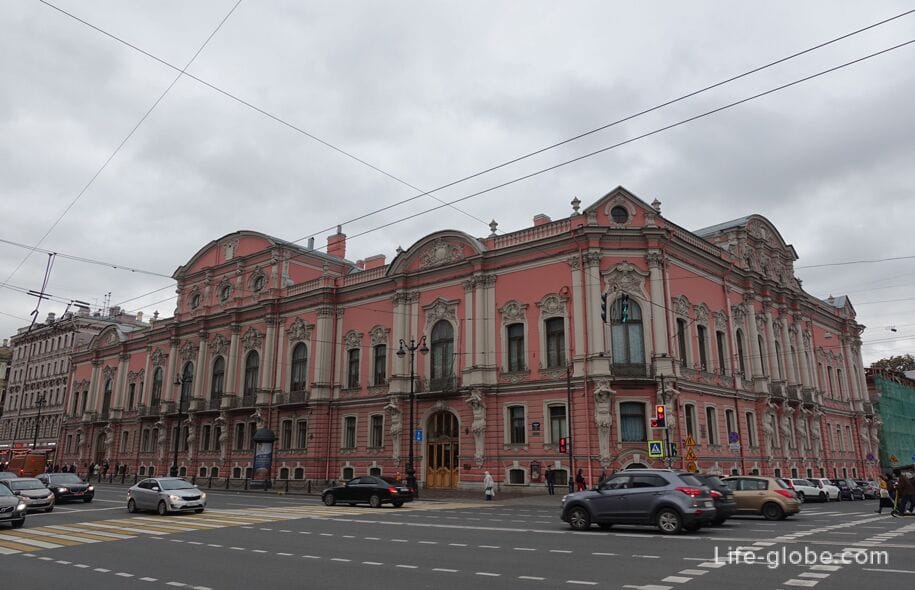
View of the Beloselsky-Belozersky Palace from Nevsky Prospekt
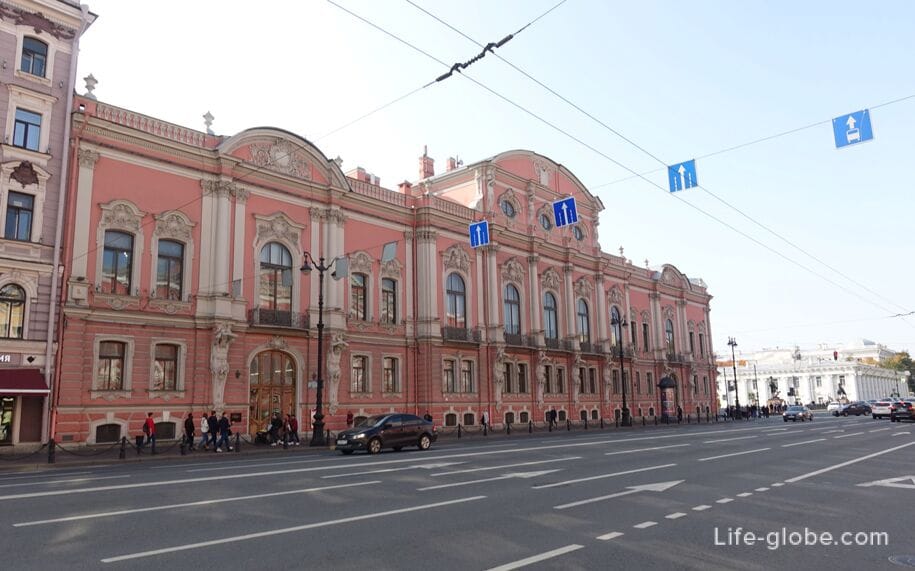
View of the Beloselsky-Belozersky Palace from the Fontanka River embankment
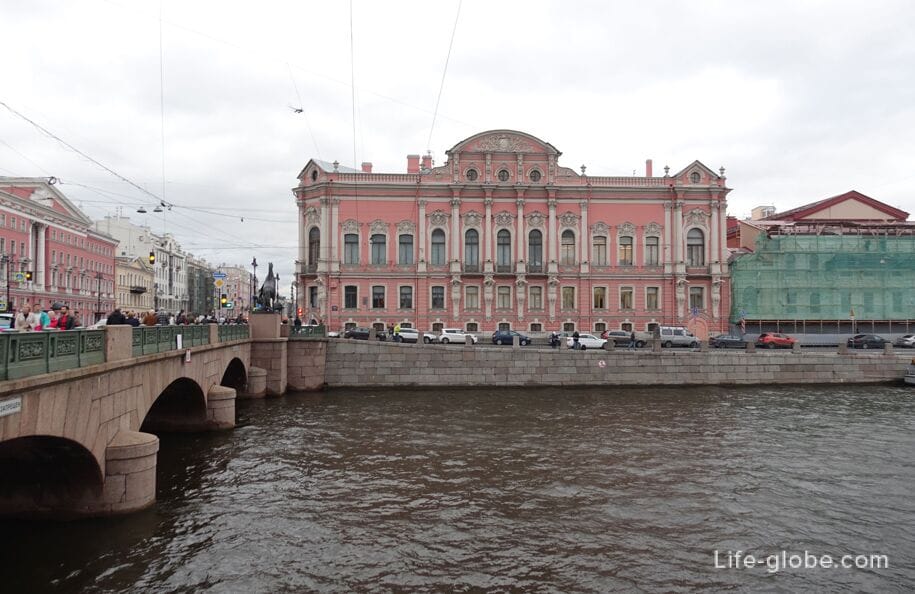
Within the walls of the palace today are several organizations, including:
- Anatoly Sobchak Museum of the Birth of Democracy in Modern Russia;
- St. Petersburg Cultural center "Beloselsky-Belozersky Palace", which hosts theater and concert events, as well as sightseeing tours of the restored historical premises of the palace;
- St. Petersburg State Academic Symphony Orchestra, whose concerts are held in the Mirror Hall of the Palace of Princes Beloselsky-Belozersky.
Tours of the palace take you through the preserved and authentic interiors, among which are the state rooms on the 2nd floor: the Oak Hall (former library), used as a small concert hall; the Art Gallery; The State Dining Room; The Beige Living Room; The Mirror (ballroom) Hall with excellent acoustics, since it was originally intended for concerts and is still used as such; the Golden Crimson Living Room.
In all these and other halls of the palace, the artistic decoration of the mid - late 19th century has been preserved: fireplaces, lamps, stucco, paintings, mirrors, furniture, etc.
The wide grand staircase serves as a striking example of the interior decoration of the palace originally made by a Stackenschneider.
Along the stairs there were caryatids and sculptures supporting gilded candelabra, and in the openwork lattice of the railing the author placed elegant monograms from the initials of the owner.
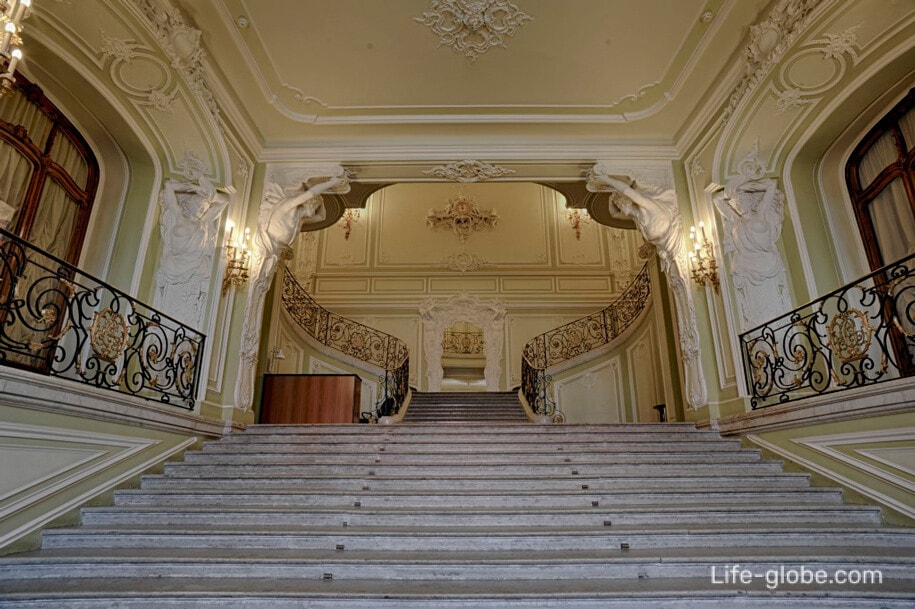
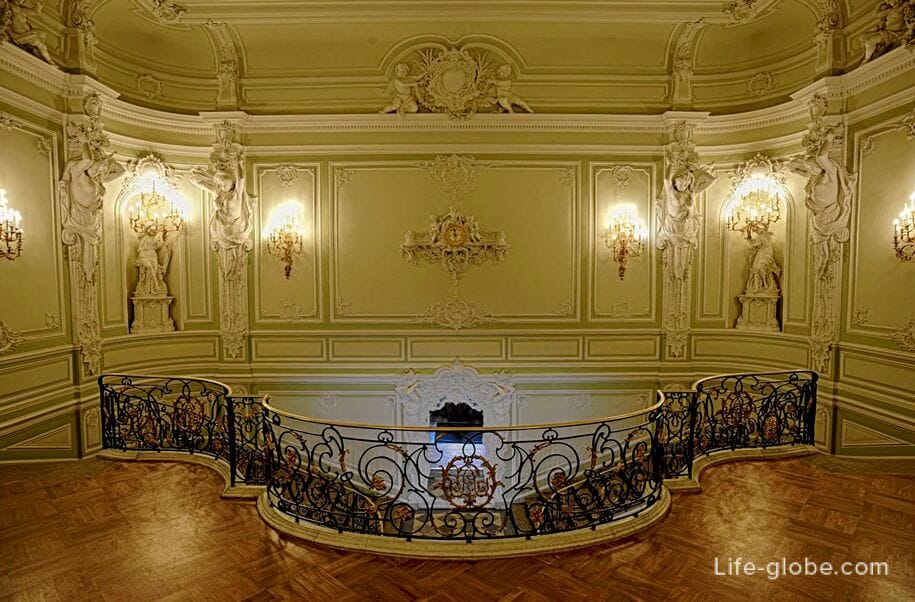


The oak hall is a former library, the walls of which were covered with carved wooden panels and covered with silk. The fireplace is decorated with a relief pattern. A huge mirror is placed in a gilded frame.
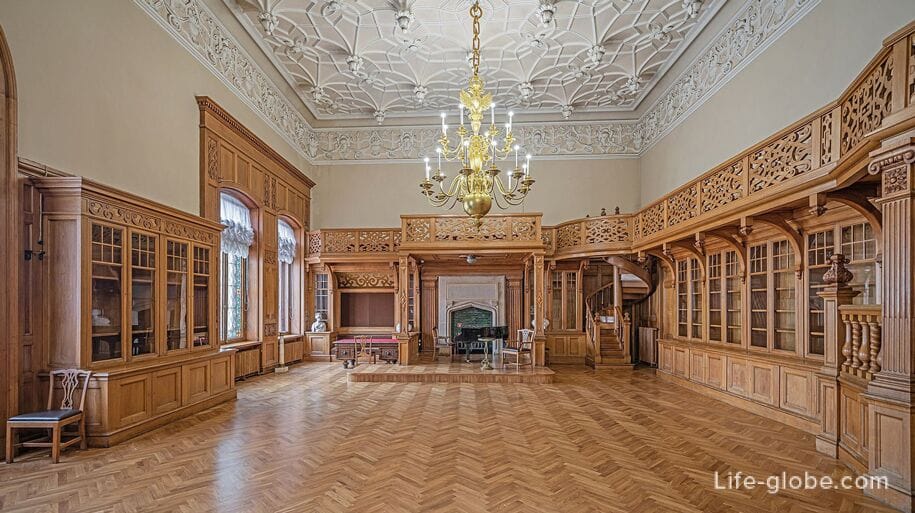
Now a concert hall.
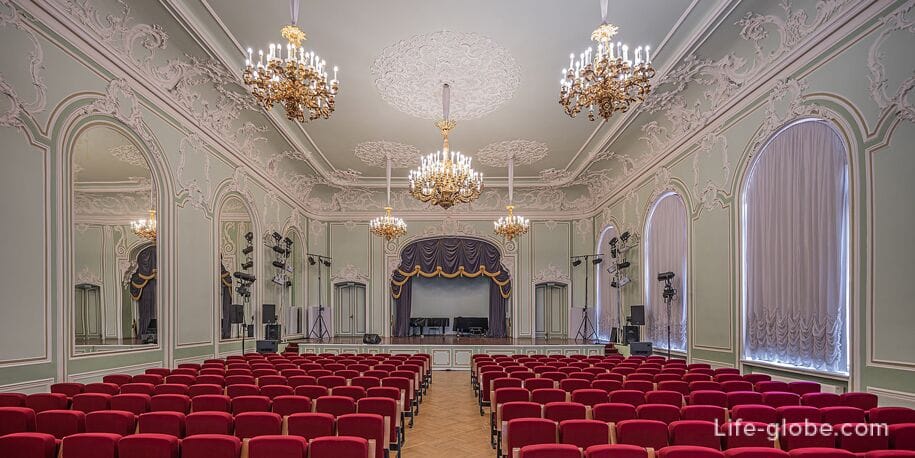
The Beloselsky-Belozersky Palace is located in the center of St. Petersburg and is a corner building on Nevsky Prospekt and the Fontanka River embankment.
Address of the Beloselsky-BelozerskyPalace : Nevsky Prospekt, 41 / Fontanka River Embankment, 42.
Coordinates of the Beloselsky-BelozerskyPalace : 59°55'57" N 30°20'40" E (59.932500, 30.344444).
Nearest metro stations: "Gostiny Dvor", "Nevsky Prospekt", "Mayakovsky" and "Ploshchad Vosstaniya".
All information about opening hours, ticket purchases, excursions, concerts and other events in the palace, we recommend that you check on the official websites.
Website of the Beloselsky-BelozerskyPalace : beloselskiy-palace.
Website of the St. Petersburg State Academic Symphony Orchestra: spb-orchestra.
Website of the Museum of the Birth of Democracy in Modern Russia of the Anatoly Sobchak Foundation: democracymuseum.
All accommodation facilities in St. Petersburg, including in the city center and more remote from it, can be viewed and booked here